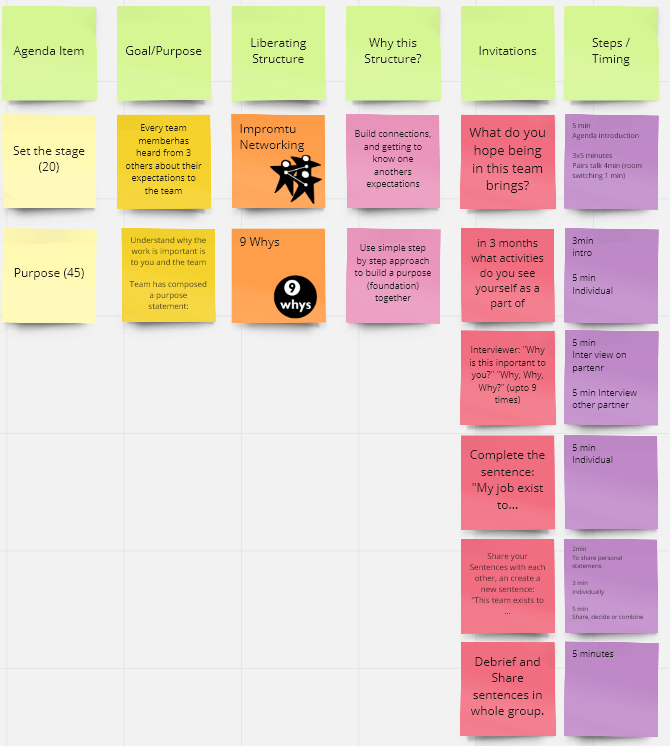When a new team is formed we hope that it will be long lasting, and that it eventually will become high performing. Sometimes it happens, sometimes it doesn’t. What determines the success? Despite there are no guarantees of success, there are still things you can do to increase the likelihood of your team becoming high performing. In this blog post series, I would like to share some experiences of mine, from starting up new teams. Inspired by the Liberating Structure “Purpose-to-practice” I am helping newly formed team to design five essential elements to make the team resilient and endurable. The 5 elements are Purpose, Principles, Participants, Structure and Practices. This post will cover my approach to helping the team identify a shared purpose.
Why is it even important to have a shared purpose?
According do Daniel Pink, “Purpose” is one of the factors of “the surprising truth about what motivates us” (Autonomy and Mastery, are the two others). Motivated people achieve greater results, than demotivated people. So making the purpose of the teams work together clear to everybody is a stepping stone towards success and high performance.
Workshop Structures


The core of this session is the Liberating Structure, Nine Why’s. This structure is all about making the purpose of your work together clear, and this is exactly what we want to achieve. Many people go mentally blank when you ask them ‘What is your purpose?’ and therefore Nine Why’s is a good approach as it allows people to explore and describe their purpose in small steps. I have added a few tweaks, which is not included in the original structure, such as ‘finish the sentence “My job exists to..”‘. This helps participants sum up their discussions in to one sentence, which not only can be revealing for the individual, but it is also easier to work with as we go along.
Instead of jumping straight in to the Nine whys, you can begin the session with an Impromptu Networking. This is an excellent structure that allows people to share viewpoints on a topic, while building connections. In this particular session the impromptu networking helps people to get their thoughts going about their expectations to being in the new team as well as talking a bit with other team members one to one.

My observations and experiences
One team came up with this purpose statement:
This team exists to deliver high quality, valuable products with a great and intuitive customer experience for external and internal users, with short time to market.
While it may not be perfectly written, and it may seem trivial and even obvious for outsiders, the fact that it is based on the individual purposes, and that the team made it together, should not be underestimated. This purpose serve as a guideline for decisions making in the team. When a decision is to be made, we hold it against the purpose, and ask ourselves: “Which choice helps us achieve our purpose?”
Other findings
- The dialogue that took place during the 9 Why’s plays an important role, in creating ownership for the purpose statement. In other words, it is not the statement itself that is the interesting part.
- Using the Impromptu Networking, gave participants possibility to express their thoughts with their own words, which made room for being fore jumping in to a more structured process.
- Teams like talking in pairs. It feels safer than speaking in the whole group. You actually build trust during those short intimate conversations
We also decided on a new team name during this session. I’ll reveal my approach for that in the next blog post.
One thought on “Identifying the shared purpose of a new team”